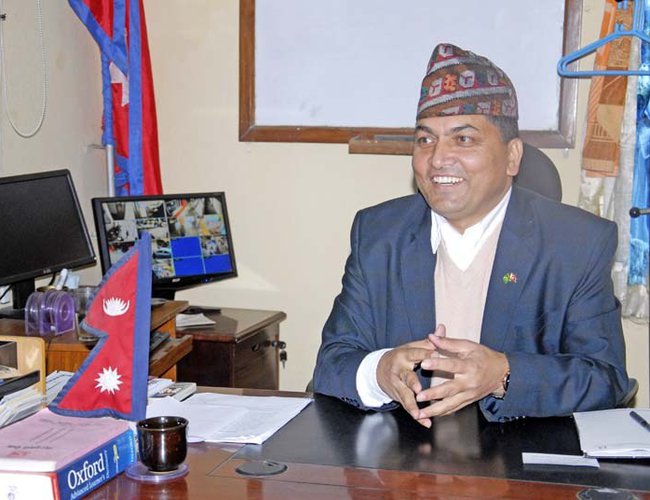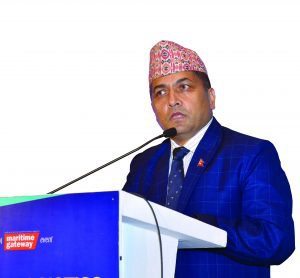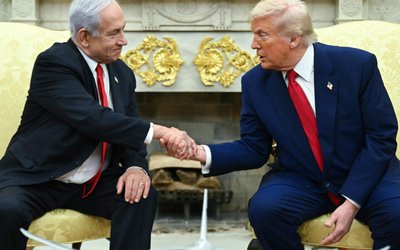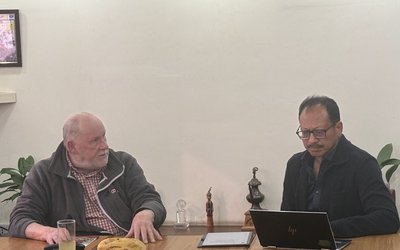
How is the current scenario of cargo movement between Nepal and India?
The country has gained political stability and has been pursuing sustainable economic prosperity. Government of Nepal has taken various initiatives to build infrastructure, new projects and concentrated specially to improvement of living standards of people. Accordingly the cargo movement between Nepal and India is in increasing trend. Currently, the cargo that comes to Kolkata or Vizag has to go by road or rail to Nepal. This is because the trade treaty recognizes only these two modes of transport. While Vizag doesn’t have any road cargo for Nepal, now a large section of the third-country container imports through Kolkata take the road. ECTS has resulted in a shift of cargo from Kolkata port to Vizag.
Nepal’s trade is more inclined towards import while export is little. How can the export from Nepal be increased?
Geography is not in favor of Nepal. As a land-locked country it has to import/export through India which by itself raises the cost of commercial transactions not only in transportation costs, but on merchandise shifting from one mode of transportation to another, also, border crossing fees and transit time among other issues.
It is time to sketch the export management approach for Nepal in the development plans, policies, and programs. In order to increase exports, structural reforms in Nepali economy have already started. New trade policy, Nepal Trade Integration Strategy 2016, recognizes the potential products for export sectors in Agro & forest based products like Ginger, Cardamom, Tea, Coffee, Medicinal herbs etc. Crafts & Manufacturing products like Handicrafts, Pashmina, and yarn etc.
Various steps have been taken and provisions have also been made in sectoral strategic policies, and recent budget to increase production. Quality improvement of high value and value added agricultural, forest and industrial products will be promoted to increase in the contribution of industrial sector to the economy together with import substitution.
In addition to Kolkata Port and Visakhapatnam Port, Nepal trade is looking forward for access to Paradip and Dhamra Ports in Odisha? How will this benefit Nepal trade and what is the current status of this move?
Nepal trade is always suffering in the name of landlockedness and geographical location. Overcoming infrastructure bottlenecks and promoting trade connectivity in terms of Road, Railway networks, Air-links, Port as well as Communication networks must receive top priority on our agenda. In addition, we are looking forward for the access to Dhamra Ports as additional port in east Coast and Mundra Port in west coast. Dhamra Port, a deep sea port with draft of 18 mts, will help Nepal trade with Transit time & cost benefit on Ocean Freight and likewise Nepal trade will have direct access to Middle East and European market with faster transit through Mundra Ports.
We proposed to Govt. of India to extend this connectivity and smooth movement of transit cargo. Both the ports will be incorporated in Transit Treaty with the Letter of Exchange.
What steps do governments in India and Nepal further need to take to facilitate smooth movement of cargo?
The inadequate infrastructure, poor road condition and congestion at the border points are the major issues which need to be taken care of. Infrastructure at the border needs to be upgraded and regular maintenance is to be made for the seamless movement of cargo. The ICP’s under construction are to be completed at the earliest as well as Railway connectivity to ICD’s and ICPs to facilitate the trade. Both Governments have to work closely for the paperless trade and use of information technology to be enhanced for smooth movement of cargo.
For the facilitation of smooth movement of cargo both countries have to give high priority to the process of Trade Simplification, Harmonization, Standardization and Modernization of Customs procedures.
Implementation of ECTS has been a major strategy to ensure quick movement of Nepal cargo. What is your assessment of the implementation of ECTS?

I think technology makes business lean and agile. ECTS is expected to bring in efficiency and transparency in entire supply chain by cutting the procedural delays, reducing paper work and end to end container visibility. The system has already been introduced at Vizag port in line with a project undertaken by the Asian Development Bank (ADB) and was introduced by Kolkata port from 15th February 2019.
It was a decade long demand of Nepal to have transhipment facility for Nepal bound cargo. This is somehow addressed with the implementation of ECTS. As of now, it has been implemented as a Pilot project with a view to have seamless movement without presenting documents, faster transit time and reduction in cost. As far as assessment is concerned, we are able to achieve first two goals but disappointed in cost front. Our business fraternities are questioning about increasing the cost. A series of meetings has been held with all stakeholders and we are hoping full cooperation from Shipping Lines to reduce inland haulage cost and achieve our goals in the days to come.
Nepal is looking at inviting private rail operators and even thinking of owning a rail network? What prompted for this plan and how do you intend to execute this?
India has already allowed private rail operators in its territory whereas CONCOR is the only rail operator for Nepal bound movement. We believe that with the participation of private rail operator the efficiency of service will increase and the transit cost will decrease, which certainly benefita the Nepal trade as well.
Actually, this is the time of fair competition in every sector. We have so many examples of not being able to get adequate number of racks and bearing high demurrage and detention. We have Railways service Agreement 2004 between two countries but now so many changes occurred in this period and trading pattern also changes day by day. Moreover, there is substantial increment in the volume in 15 years duration and we look forward for our participation for smooth movement. In this context Government of Nepal has focused to extend connectivity to internal and external by road and rail. Nepal has established Department of Railways to develop and construct railway network. Department of Railways has a plan of building 4000 KM railway network in two decades. We are looking forward to necessary assistance to extend connectivity and railway operation from Government of India.
Inland Waterways is another pet project of Nepal government? What is the status and what are future plans?
During our Prime Minister KP Sharma Oli’s visit to India in April last year, both sides agreed to explore the possibility of inland waterways via India and assigned officials to carry out the feasibility study. An understanding to incorporate inland waterways facilities in Transit Treaties was made during a joint meeting of senior officials from Nepal and India held at New Delhi in March, 2019. A joint technical team conducted several field visits to various Indian navigation points to figure out how Nepal can expand its transit facilities through waterways.
The technical team had identified Koshi and Narayani rivers for waterways connectivity. The Sahibgunj and Kalughat routes via Haldia port as the most viable routes for inland waterways transit between the two countries and subsequent movement to Biratnagar and Birgunj by Raod. Nepal is keen to have its vessels ply on waterways and in line with this, Nepal recently set up the Vessel Registration Office for ship registration and facilitation of maritime trade.
Road infrastructure improvement is a major concern of Nepal trade. How is the government planning to improve road infrastructure and connectivity from border check posts to the hinterland?
As a landlocked country we are suffering so many obstacles in third country trade. The development of road infrastructure in Himalayan and Hilly Mountainous terrain is a major concern. The emphasis has been given for the development of road infrastructure. Lots of projects are going on and temporary track has been opened in few parts for the development of roads. Necessary budget has been appropriated to upgrade the East-West Highway, construct Kathmandu-Nijgarh Fast track, Puspalal (Middle Hills) Highway and Postal Highway and develop the national highways as express highways. Construction of a tunnel will start in the Naubise-Nagdhunga section of the Prithivi Highway from the coming fiscal year.
Government of Nepal has a plan for developing infrastructure to connect each province with at least one international commercial transit point and necessary arrangement has been made in fiscal budget.
Improving efficiency in customs clearance procedures is another major concern of shippers in Nepal. How can the functioning of customs be made more efficient?
Department of Customs has been moving towards making its administration more capable, service oriented, transparent and technology based. Department of Customs has prepared its four year Customs reforms and modernisation Strategies and Action Plan in 2017. The plan has outlined the professional and competitive Customs service, fair and accurate revenue collection and custom reform issues to transfer Nepal Customs towards international standard. Since then there has been a significant progress in Customs reforms which has resulted in improved performance and trade facilitation.
The efficiency of Customs has been improving. Customs Act is under revision and very soon we will have new Customs Act and regulations, which will further facilitate the trade and efficiency will be improved.
Department of Customs has concentrated to control unauthorised trade and applying new strategies and technological application.
Bringing different government agencies together to create a single window for trade can further improve ease of doing business. Is Nepal government taking up any initiatives in this regard?
The single window system will help to reduce entrepreneur’s time and cost. The work of creating National Single Window is in progress. I believe, Ministry of Industry, Commerce & Supplies, Department of Commerce, have already selected the company to Design, Supply and Build National Single Window System in Nepal.
The government has also formally begun one-stop service for investors in the country on 15 May 2019. The one point service centre for investors and businesses is located inside the Department of Industry, with the objective to provide effective and quick services like approvals, registration and other administrative services to investors. This one-window service will be instrumental in addressing procedural hurdles for investors.
- MELAMCHI WATER SUPPLY: No Interruption During Monsoon
- Jun 25, 2025
- KOREAN RETURNEES: Successful Integration
- Jun 25, 2025
- UPPER TRISHULI-1: Engaging With Local
- Jun 25, 2025
- IME GROUP: Twenty Five Years Of Journey
- Jun 24, 2025
- NEPAL’S AIR POLLUTION: A Growing Health Concern
- Jun 24, 2025















